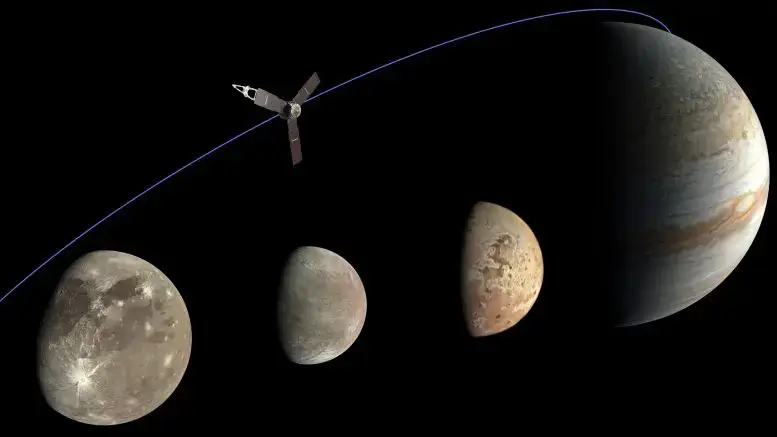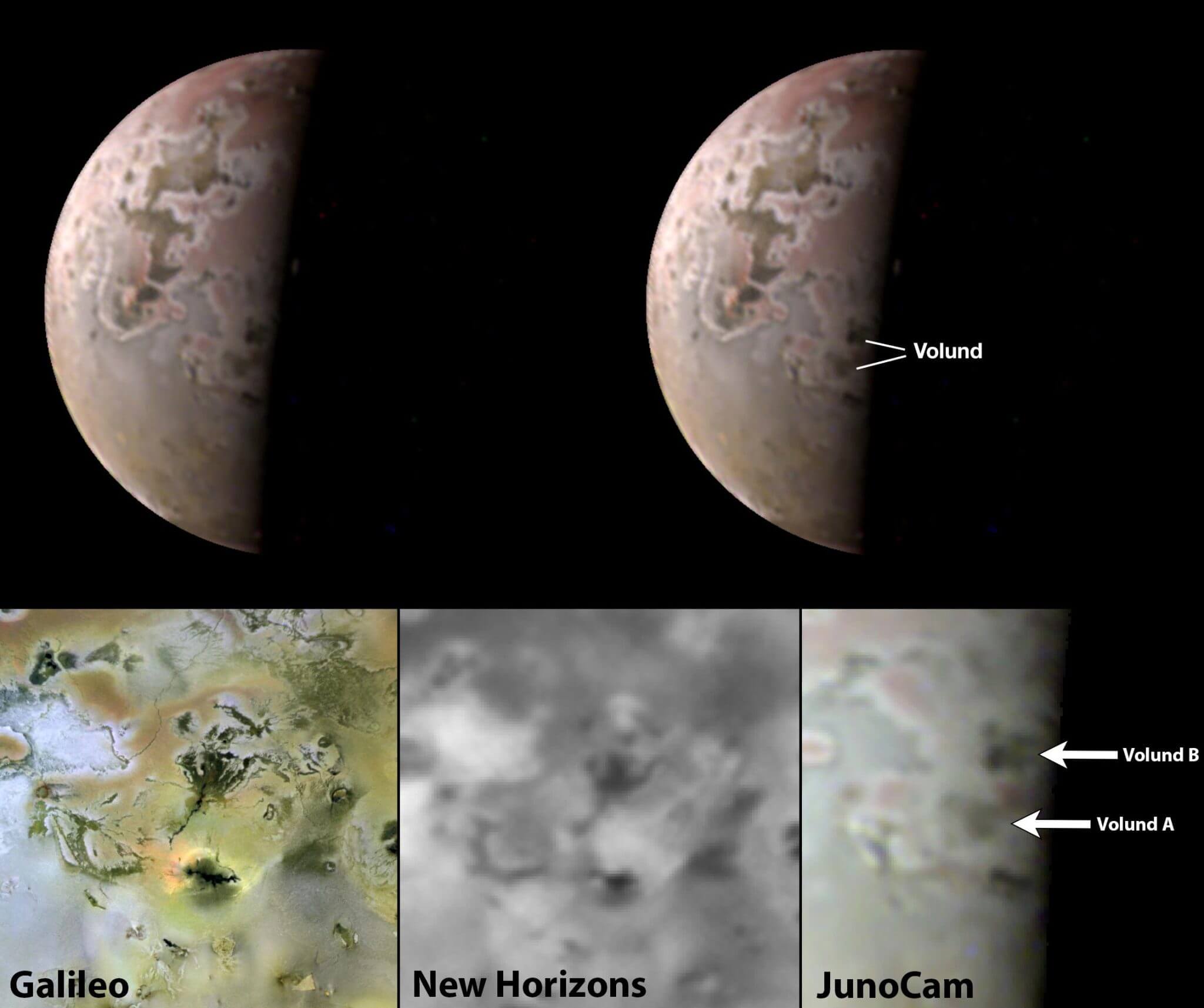Io is a raging volcanic world. NASA researchers are specifically looking at a "hot" spot observed by several spacecraft visiting the Jupiter system and growing from image to image

When NASA's Juno probe flies past Jupiter's moon Io on Sunday, July 30, the probe will make its closest approach yet, coming within less than 22,000 km of the moon's surface. It is expected that the data collected by the Italian developer JIRAM (Jupiter Infrared Imager) and other science instruments will provide a wealth of information about the hundreds of active volcanoes spewing molten lava and sulfide gases across the volcano-covered moon.
"While JIRAM was designed to observe Jupiter's aurora, its ability to detect heat sources is proving indispensable in our pursuit of active volcanoes on Io," said Juno principal investigator Scott Bolton of the Southwest Research Institute in San Antonio. "As we get closer with each close flyby, JIRAM and other instruments aboard Juno add to our library of lunar data, allowing us not only to better discern surface features but also to understand how they change over time."

Launched in 2011, Juno has been exploring the Jupiter system since 2016 and will begin the third year of its extended mission on July 31.
- Io is a world in constant torture. Not only does the largest planet in the solar system gravitationally pull it constantly, but so do its Galilean siblings - Europa and the largest moon in the solar system, Ganymede. The result is that Io is continuously stretched and compressed, actions associated with creating the lava that can be seen erupting from its hundreds of volcanoes.
During Juno's last close flyby of Io on May 16, JunoCam captured an image from a distance of 35,600 km showing a blurry patch in the Moon's Volund region, near the equator. Such fuzzy spots are smoldering evidence for planetary explorers.
"When I compared it to light images that appear to have been taken in the same area during the Galileo and New Horizons flybys (in 1999 and 2007), I was excited to see changes in Volund, where the lava field expanded to the west and another volcano north of Volund was surrounded by fresh lava flows," said G. Jason Perry of the HiRISE Management Center in Tucson, Arizona. “Io is known for its extreme volcanic activity, but after 16 years, it's so nice to see these changes up close again. Volcanic activity is a dynamic process, and repeated photographs allow us to follow the changes over time."
In the same passage from May 16, JIRAM found his own smoking testimony. The infrared probe built by the Italian space agency, Agency Speciale Italiana, could image the 202 km wide Loki Petra, the largest crater on an island. At a resolution of less than 10 km per pixel, the JIRAM data reveal what could be an active volcano. The team is hoping for another look with the next flight.
"The data show that the lava can bubble to the surface in the northwestern part and create a lava lake towards the south and east," said Alessandro Mora, a co-researcher from the National Institute of Astrophysics in Rome. "Any volcanologist will tell you that it is important to determine whether a lava lake has a source of stable material from an underground chamber. These data, and those we will collect in future spaceflights, will be critical to understanding the type of volcanism occurring on Io."
Bolton and other members of the mission met in mid-June with 49 students and young scientists from across Europe at the University of Rome for a weeklong workshop on Juno's groundbreaking data on Jupiter and its moons.
"The contributions of the European scientific and engineering communities were so fundamental to the success of our mission," Bolton said. "This is a small way to give back to the community that is so important to us. During the workshop, students and young researchers worked with members of the Juno science team to develop exciting science projects based on our data. Based on what I have seen and the enthusiasm of these young people, the future of planetary space exploration in Europe is bright."
More of the topic in Hayadan:

2 תגובות
A dyson ball is better
This hell on Jupiter's island moon Io reminds us how amazing a world our Earth is
that will literally be stitched to life on it.
We must wake up before it's too late. For us, for our children.
Mankind's engagement in wars destructive to the earth must be stopped because
Differences in religion, race, greed for territory and money, etc.
We need to put the fact that we are restoring the planet together at the top of the list of priorities
For future generations who also have, for example, a product to enjoy, for example unpolluted water, from foods
that are not contaminated with microplastic particles that have crumbled from all the plastic we throw away.
It is interesting to note on the topic of the climate crisis in our country, that in my opinion it is not a serious problem. Excess energy and excess heat is possible
Take care even if it is expensive. The problem was more serious if there was a lack of energy.
For example, a possible treatment for excess heat and energy on Earth is to deploy thousands of sheets in space that will block part of the sun's radiation. There is already something like that that people are planning.
Eli Isaac
Private tutor for computer science and mathematics up to a master's degree and builder of projects
https://eisaak123.wixsite.com/privatelessons